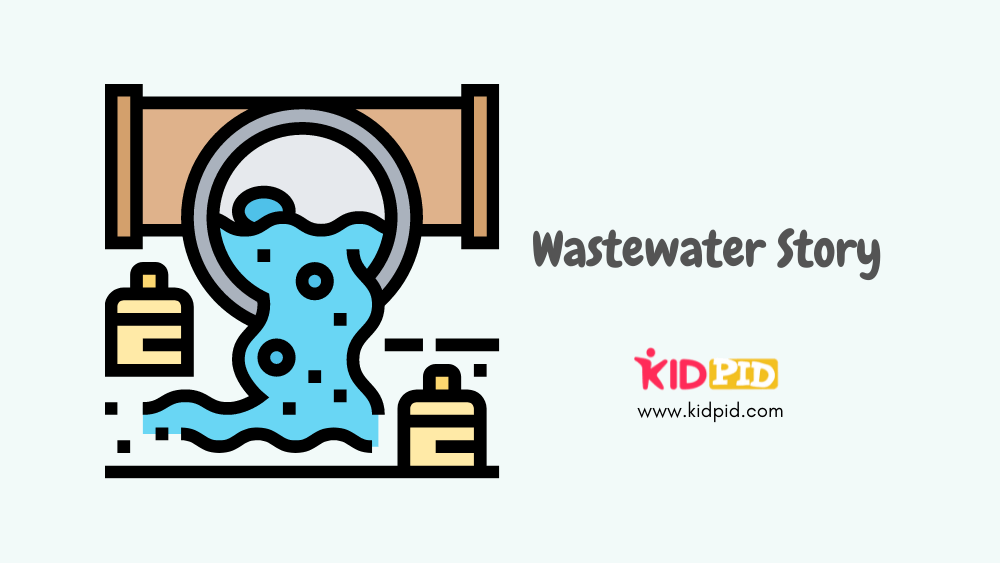Wastewater Story

Water that has being used by someone and which is of no use is known as Wastewater. It is of dirty colour and with lots of impurities present in it. It cannot be used for drinking, washing or cooking as it is the waste water. Waste is referred as the substance that has been used and after use it has been thrown out. Trash is another name of waste.
If we want to reuse this waste water, we can do it by cleaning it. It involves the following steps:
Contents
Wastewater, How can we conserve it?
1. Removing of big waste
The waste like plastic bags, bottle, napkins or tissues etc, present in the water are removed by the big channels through which the water flows forward. The removed waste are transferred in different vessels and processed to become a slurry(slurry is a type of waste mud which can be used as manure after chlorination and different processes).
2. Separation of Wastewater and small particle.
After the removing of garbage from the water the small particle are removed with the help of nets, then the water is send further for cleaning.
3. Chlorination.
It is a process in which water is cleaned with chlorine and nitrogen so that it can be purified. After the process the water goes into big vessels in which it is stored and the water goes through the different partition of that vessels into different processes so that it can get ready for use.
4. Water released.
After the three steps the water is left into the rivers to get its quality back and to get back into the cycle of the nature. This water can used for drinking, cooking, washing and for different uses.
Therefore, these were the following steps used in developed countries like USA, China, Japan and many more. These countries follows these modes so that they can conserve water and get the used water back into use. As water is scarce in nature and should be saved, because without water there is no life on earth.
Important Terms in the chapter Wastewater story are as follows-
1. Sewage
A sewage is the path from which the waste water flows from different sewers which are connected to the bigger sewers. They are the transport route for the waste water of various placing like plant and machinery or industries and homes.
A sewer is a pipe structure tubes through which the waste water passes. It helps it to flow towards a plant. Sewage involves a Sewage system which includes the process of transportation of the waste water from different places.
2. Waste Water Treatment Plant
A treatment plant is place where the waste water is treated and processed so that it can be sent back to the nature. Also, so that the water level on earth remains same. Their will be plenty of water for everyone and to conserve it these treatment plants are made. As water is scarce in nature with lots of uses. Therefore, we need to save it, even a drop or a ocean, we should save.
3. Sanitation
It is the process of maintaining hygiene and cleanliness around us and in the environment. Sanitation is important as it maintains the well being and nature of the surrounding. The environment surroundings matter, a clean and tidy environment leads to good vibes and good ideas.
4. Disease
It refers to the situation when an individual is unfit or unwell to perform a task. When the health of a person is not well. A disease can spread through a touch or through air. Diseases can be of many types like skin disease, organs disease, bones disease and brain disease(mental disease)etc. They can be procured by taking medicines or vaccinations. It is prevented by the help of doctors or the hospitals.
5. Aeration
It is the process in which air is pressures into any liquid to remove its impurities. It is usually used in industries and waste water plants. Aeration can be done in food items like it is used in to make breads fluffy, it is used to give a sponge in the food items like bread, cheese, cakes and ice cream etc.
6. Sludge
It is an unhealthy mixture of mud, garbage and waste which flows from sewers. It is brown or green in color with a bad smell which is disease-prone. It is liquid garbage which flows in the waste water. It includes tissues, napkins, bottle, rugged clothes, vegetable or fruits waste particle thrown improperly with water.
7. Contaminants
They are the waste which are poisonous and should be kept out of reach as it may lead to severe disease to anybody, it can affect the plants, animals, humans and the most important the environment.
8. Sewerage
It is the path of the waste water which flows from different sewers to big sewers. They help in transporting the sludge, the waste and the dirty used water to flow towards water treatment plants for improvements.
House Keeping Activities
- The waste part of the food should be thrown separately after washing the dishes. As if it is thrown with water it may lead to water logging.
- The waste part while washing of clothes should be separated after the clothes s being washed. The sewers connected to homes are small in size, it may lead to breakage of these pipes which may lead to drainage outside on the roads, which will break the flow towards the big sewers.
- Al the sewers are connected to the plant, if the flow breaks the amount of wastewater which should have been gone for treatment won’t be able to reach and will be of no use.
- Medicines solutions should not be drained in the wash basin as it may lead to toxic waste water and which may affect further.
- As medicines are made up of chemicals and if these chemicals get mixed up from different sewers it may lead to explosion. So, Medicines, chemicals, paints, solvents and motor oil etc should be disposed of separately.






Responses